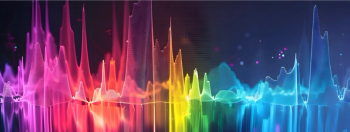
Reflections on a Career in Spectroscopy and Advice for the Next Generation of Scientists
Part of a new podcast series presented in collaboration with the Federation of Analytical Chemistry and Spectroscopy Societies (FACSS), in connection with SciX 2012 ? the Great Scientific Exchange, the North American conference (39th Annual) of FACSS.
An interview with Peter Griffiths, the 2012 winner of the ANACHEM Award.
Part of a new podcast series presented in collaboration with the Federation of Analytical Chemistry and Spectroscopy Societies (FACSS), in connection with SciX 2012 — the Great Scientific Exchange, the North American conference (39th Annual) of FACSS.
For more podcasts in this series, visit
Peter Griffiths is an emeritus professor of chemistry at the University of Idaho, in Moscow, Idaho. Griffiths received his doctorate in physical chemistry at Oxford University and did postdoctoral research at the University of Maryland (College Park, Maryland). He then worked as a product specialist at Digilab (Holliston, Massachusetts), where the first FT-IR spectrometer of the modern era was developed. He started his academic career at Ohio University where he ultimately named achieved the rank of distinguished professor. He then moved to the University of California, Riverside, before being appointed chair of the Chemistry Department of the University of Idaho, where he is now professor emeritus.
The research in Griffiths’s laboratory has been largely centered on the application of infrared and Raman spectrometry to the solution of problems of analytical, environmental, and structural chemistry. Topics on which he has published extensively include various types of infrared reflection spectroscopy, Raman spectroscopy, chemometrics and data processing, developments of instrumentation for infrared spectroscopy (especially FT-IR), hyphenated techniques, open-path atmospheric monitoring, and surface-enhanced infrared and Raman spectroscopy.
Griffiths served as associate editor of the journal Applied Spectroscopy for almost twenty years and took over as editor-in-chief in July 2009, a position from which he will step down in July 2012.
The ANACHEM Award, established in 1953, is presented annually to an outstanding analytical chemist based on activities in teaching, research, administration, or other activity that has advanced the art and science of the field. The ANACHEM award will be presented to Peter Griffiths at the SciX 2012 meeting, which will be held in Kansas City, Missouri, from September 30 to October 5, 2012, as a part of a special symposium in which a group of invited speakers will discuss the future of mid-infrared and Raman spectroscopy.
More about the SciX conference:
The traditional North American meeting of FACSS is now SciX - The Great Scientific Exchange. SciX covers the whole of analytical chemistry with an emphasis on emerging technologies. SciX carries the FACSS tradition of a strong technical program (over 100 symposia), many prestigious awards, exhibits, a variety of workshops, an employment bureau and multiple social networking opportunities.
SciX is the National Meeting of the Society for Applied Spectroscopy (SAS).
For more information about the SciX 2012 conference in Kansas City, Missouri, September 30 to October 5, 2012, visit
Follow Spectroscopy and FACSS on social media:
Newsletter
Get essential updates on the latest spectroscopy technologies, regulatory standards, and best practices—subscribe today to Spectroscopy.





